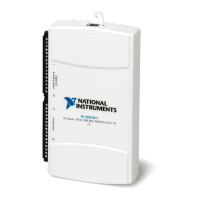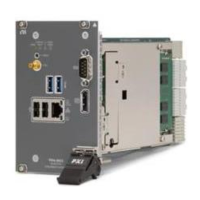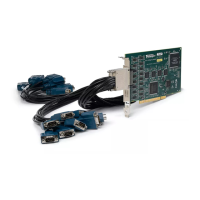© National Instruments | 2-3
NI 6612 User Manual
For voltage input and output levels and the current drive levels of the DIO lines, refer to the
NI 6612 Specifications.
Digital Input Data Acquisition Methods
When performing digital input measurements, you either can perform software-timed or
hardware-timed acquisitions.
Software-Timed Acquisitions
With a software-timed acquisition, software controls the rate of the acquisition. Software sends
a separate command to the hardware to initiate each acquisition. In NI-DAQmx, software-timed
acquisitions are referred to as having on-demand timing. Software-timed acquisitions are also
referred to as immediate or static acquisitions and are typically used for reading a single sample
of data.
Each of the DIO lines can be used as a static DI or DO line. You can use static DIO lines to
monitor or control digital signals. Each DIO can be individually configured as a digital input
(DI) or digital output (DO).
All samples of static DI lines and updates of static DO lines are software-timed.
Hardware-Timed Acquisitions
With hardware-timed acquisitions, a digital hardware signal (di/SampleClock) controls the rate
of the acquisition. This signal can be generated internally on your device or provided externally.
Hardware-timed acquisitions have several advantages over software-timed acquisitions.
• The time between samples can be much shorter.
• The timing between samples is deterministic.
• Hardware-timed acquisitions can use hardware triggering.
Table 2-2. Lines Without a Populated CI
Port 0 Port 1
PFI 11 / P0.11 PFI 35 / P1.3
PFI 15 / P0.15 PFI 39 / P1.7
PFI 19 / P0.19 —
PFI 23 / P0.23 —
PFI 27 / P0.27 —
PFI 31 / P0.31 —

